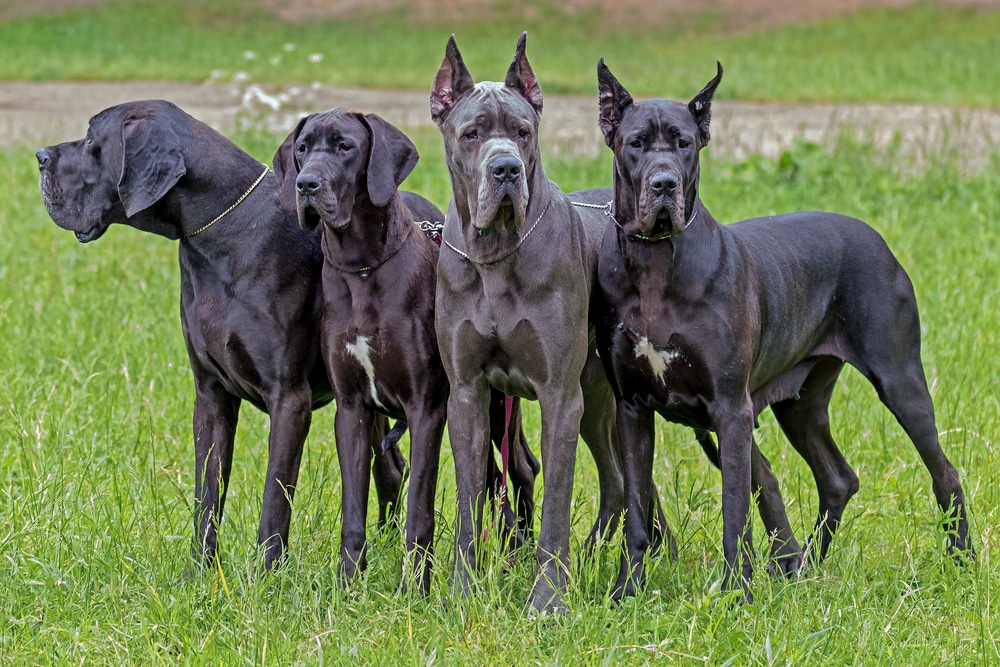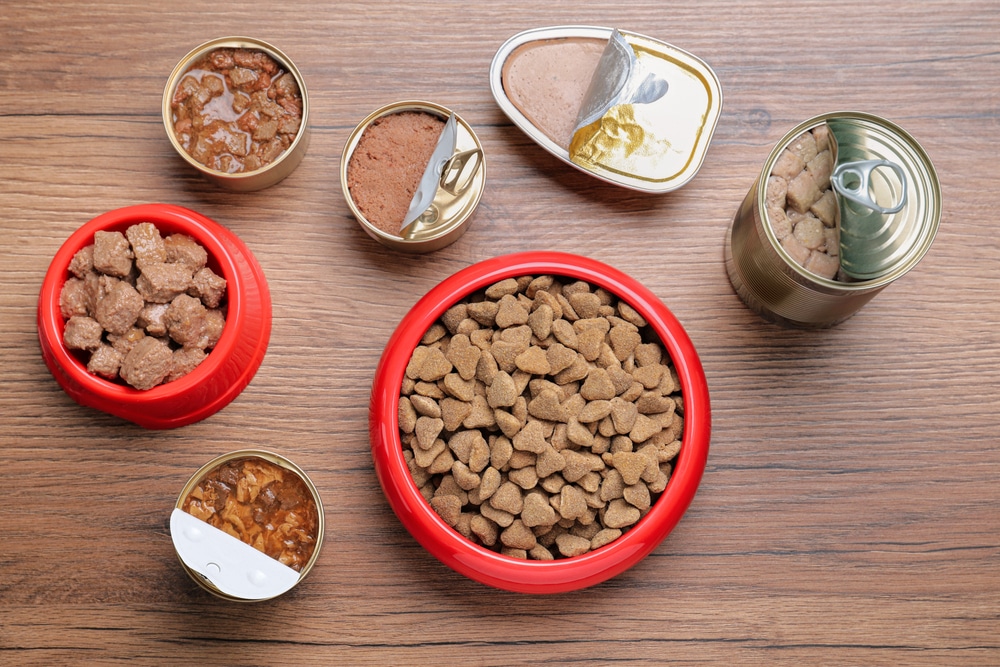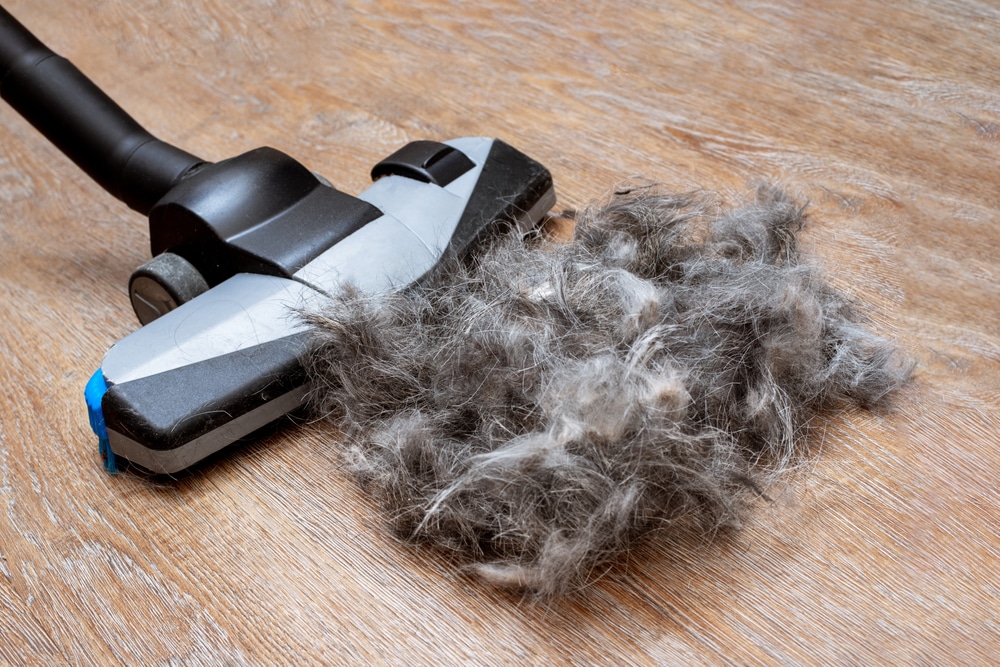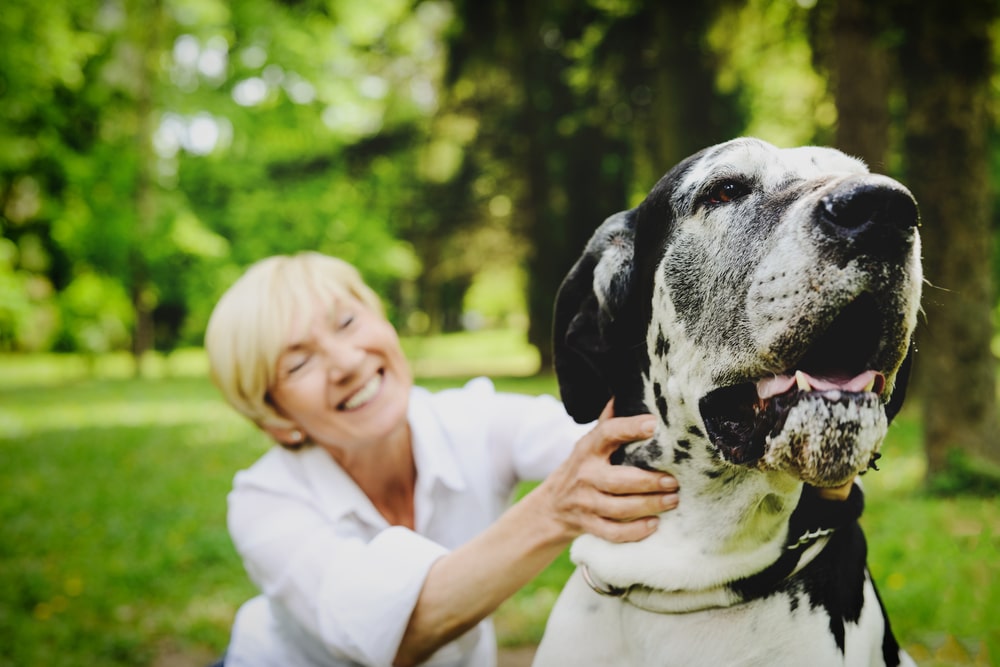“This post contains affiliate links, and I will be compensated if you make a purchase after clicking on my links.”
Last Updated on February 27, 2023
Great Danes are one of the dog breeds that tower over most other dogs due to their size. Their stature alone is symbolic of elegance and strength. And due to this, they give off a certain aura that most people find intimating. However, they are actually very amenable and gentle dogs.
Appearance and temperament are some of the Great Dane characteristics that makes this breed a widely revered canine. But if you are thinking of getting a Great Dane or are a new Great Dane parent, these two aren’t the only characteristics you need to know.
Continue reading below to see seven Great Dane characteristics you need to know to help you get acquainted with your dog.
7 Great Dane Characteristics You Must Know

The Great Dane is, without a doubt, a well-known breed around the globe but is particularly popular in America. As a matter of fact, Great Danes are ranked 17 among 197 dog breeds in the American Kennel Club’s (AKC) 2021 Most Popular Dog Breed Ranking.
Get to know the breed more and find out what makes these dashing and giant dogs popular. Below, we listed down some of the most basic yet important characteristics you need to know about Great Danes.
1. Breed Origin
One of the first Great Dane characteristics you must know is the origin of the breed.
Their history is quite old. It is said that their presence can be traced back to ancient Babylon. Although the first known Great Dane dog is said to have come from ancient Assyria, where carvings of large Dane-like dogs were found on artifacts as old as 2000 BC.
While there are no proof, the general consensus was that Assyrian traders traded the dogs to ancient Romans and Greeks. And then the dogs were cross bred with different dogs from the Romans and Greek.
And even though their name suggests that they came from Denmark, they actually originated from Germany. Hence, it can be said that the name of the breed ‘Great Dane’ is more of a misnomer.
Furthermore, the Germans bred the Great Dane over 400 years ago, especially by German nobility, to protect estates and hunt wild boar. And for these specific purposes, they combined these three breeds to create Danes:
- Irish Wolfhound
- Greyhound
- Mastiff
The notable characteristics that Great Danes inherited from these three breeds are the Mastiff’s large muscles and strength, the Greyhound’s agility and the Irish Wolfhound’s size and stature.
This indicates that the Great Dane has the perfect characteristics to hunt wild boars and protect German nobilities back in the day.
2. Appearance

Among all the Great Dane characteristics, the physical appearance of the breed is what turns head and what they’re most notable for. Thanks to their majestic and regal appearance, Great Danes are known as the mighty “Apollo of Dogs”.
Great Dane Height
Great Danes are undeniably large dogs. A male Great Dane can grow as tall as 29 to 35 inches. Females, on the other hand, are one or two inches shorter and can grow somewhere between 28 to 33 inches.
Great Dane Weight
A male Great Dane can weigh around 120 to 200 lbs and a female Great Dane can weigh around 99 to 120 lbs.
Great Dane Colors
The Great Dane comes in different coat colors, patterns and markings. However, the AKC only recognizes seven official and standard colors, and these are:
- Black
- Blue
- Brindle
- Fawn
- Harlequin
- Mantle
- Merle
These coat colors are the standard colors and are the only ones allowed in dog shows. Among these seven, the most common is the Fawn color, while the most expensive is the Harlequin.
Other Great Dane coat colors also include white (which is the rarest) and black & white.
Great Dane Ear Cropping
Great Danes are born with naturally large, floppy ears. However, their ears were cropped back in the day because they frequently get injured while hunting boars.
But today, since Great Danes are no longer used to hunt boars, modern ear cropping has become a mere personal and cosmetic preference.
Some say that ear cropping can help prevent ear infections. Although, currently, there are no studies to support such claim.
3. Temperament
The Great Dane is often called a “gentle giant”. And this name ideally symbolizes one of the Great Dane characteristics: their temperament, which has greatly evolved over the years. The breed which was initially bred to hunt boars has turned into a benign canine.
Despite their intimidating aura, Great Danes are loving, friendly, patient and loyal in nature and are perfect for families. And they are, quite literally, big bundles of joy.
Despite their size, they are very gentle creatures and are, for the most part, calm and kind dogs. Thanks to these Great Dane characteristics, a lot of people love these dogs as family companions. Great Danes can be very affectionate and loyal to their owners and loved ones.
And since they are loyal to their owners, they can also be very protective. This trait, along with their huge and intimidating stature, is what makes them great guard dogs.
Furthermore, they are social dogs. They get along well with other pets and people – even children! They adore kids and can be extra patient with them too, provided the Dane is socialized and trained properly.
While they are social and friendly, Great Danes are known to be lazy dogs. They enjoy their play time but will want their much-needed rest after all that socialization.
Overall, Great Danes are gentle, loyal and loving dogs that are perfect family companions.
4. Diet

Among all the Great Dane characteristics, their diet plays a critical role in ensuring they grow up strong and healthy.
Great Danes have different food requirements than other smaller breeds. And sustaining the dietary needs of a dog as big as a Great Dane is important.
If you do not provide them a proper and balanced diet, then they will not grow properly, or worse, grow up with skeletal or muscular problems.
Whether you prefer to feed them dry, wet or raw food, a Great Dane’s diet must always be high-protein and low-fat. As a general rule, puppies should not eat food with protein levels higher than 24% and the fat levels should be somewhere between 12% to 14%.
This is a balanced diet that promotes proper bone and muscle growth, especially for a big dog breed such as the Great Dane.
Furthermore, you should not feed Great Dane puppies food meant for adult Great Danes, and vice versa. Because if you feed a Great Dane puppy adult Great Dane food, it will make the puppy grow faster than intended that can later result in skeletal abnormalities.
5. Training & Exercise
Proper training and exercise are indispensable for Great Danes. With a dog this big, you need to ensure they are always getting the exercise they need but still being on their best behavior.
Great Dane training should start as early as possible. If you’re planning to get a Great Dane puppy, you can start training it as early as 8 weeks. And you can start with basic training like potty training, leash training, socialization, etc.
To effectively training your Great Dane, you have to consider their age, their characteristics, your training methods and the consistency of training.
Generally, Great Danes are easy to train because they are known to be people pleasers. So, they’ll do anything to satisfy their owners. However, some Great Dane owners say that the dogs can be stubborn when it comes to training.
Ad when it comes to exercise, a moderate amount of physical activities to keep them both physically and mentally healthy is all you need.
Generally, regular exercise for one or two hours a day is enough for them. You can take them to a dog park, or play games such as fetch, hide-and-seek and tug-of-war with them.
6. Shedding & Grooming

Another one of the Great Dane characteristics you need to know is their shedding. Great Danes have single, short and smooth coats and they are considered moderate shedders.
Although they do not shed as much hair as double-coat breeds, they still shed more fur than an average-sized dog due to their enormous size.
Generally, Great Danes shed moderately throughout the year but shed more hair during the spring season. The increased shedding in spring is because their coat prepares for the change in seasons.
If you want to reduce their shedding, you have to groom your Dane properly. Grooming them involves brushing the coat at least twice a week. This helps remove loose fur and keeps their fur shinny and healthy.
Other than brushing, bathing a Great Dane also helps reduce shedding. Be careful though, Great Danes can be prone to dry skin, so frequent bathing is not recommended. Instead, bathe them once every two weeks using a mild dog shampoo.
7. Lifespan & Diseases
Probably one of the most heartbreaking Great Dane characteristics you should know about is their lifespan and their predisposition to a number of diseases.
Great Danes have a short lifespan. They are estimated to only live for about 6 to 10 years, with some not even reaching the age of 7 years old.
So, why do Great Danes have such a short lifespan? The exact scientific reasons are unknown. But most suggest that due to other physical Great Dane characteristics, the dogs are more susceptible to a number of health issues.
Some of the most common health problems that affect a Great Dane’s lifespan are the following:
Bloat
Bloat is the most common health problem a Great Dane can suffer from. And according to certain researches, 42% of Great Danes develop this condition during their lifetime and 13% die from it.
The primary cause of bloat is yet to be discovered. However, throughout the years, factors such as eating too fast, playing/exercising before and after a meal, etc. have been observed to contribute to Bloat.
To lower the chances of Bloat, make sure to feed your Dane two (or three) times a day, instead of one. And do not play/exercise with them right before and after their meals.
Hip Dysplasia
Hip Dysplasia is a common health issue with large dog breeds such as the Great Dane. It occurs when a dog’s hip joint doesn’t develop properly and the dog cannot use its hind legs properly.
Great Danes who suffer from Hip Dysplasia can experience extreme pain when moving. They are unable to do basic movements such as climbing stairs, jumping, walking or even getting up.
To prevent Hip Dysplasia, you have to ensure that your Great Dane, starting from puppyhood, is having a proper and balanced diet fit for their age.
Dilated Cardiomyopathy
Dilated Cardiomyopathy or DCM is a type of heart disease where the heart’s muscles weaken, resulting to an enlarged heart.
Great Danes actually rank third on the list of dog breeds that die from heart diseases like DCM according to a Swedish survey.
DCM in Great Danes is actually difficult to detect. When a Dane suffers from DCM, they do not immediately show signs and symptoms of the disease, and can appear healthy. So, as preventive measure, getting an electrocardiogram (ECG) will help detect it.
Conclusion

A dog who is always at both ends of the spectrum – Powerful yet gentle, intimidating yet loving, regal yet playful, a Great Dane is simply too beautiful to ignore.
So, if you’re looking to adopt or buy a Great Dane soon, we hope that this list of Great Dane characteristics has helped you get to know, and hopefully, love this gentle giant as much as we do.